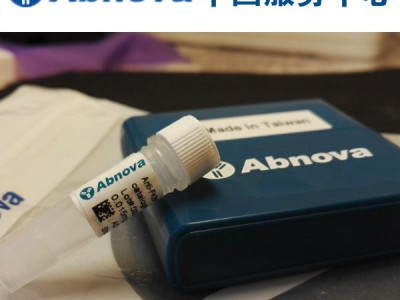Abnova产品货号: CS0021
产品全称: NTRK3分裂探针
- 【NTRK3 Split Probe】
产品描述:NTRK3分裂探针设计用于通过显色原位杂交(CISH)在福尔马林固定的石蜡包埋标本中定性检测涉及人类NTRK3基因在15q25.3的易位。
- 【NTRK3 Split Probe is designed for the qualitative detection of translocations involving the human NTRK3 gene at 15q25.3 in formalin-fixed, paraffin-embedded specimens by chromogenic in situ hybridization (CISH).】
基因名称及描述:
暂无说明
抗原种属: 暂无说明
适用实验样本种属: 暂无说明
承诺应用实验类型:CISH-P
注意事项: 该探针将与CISH实施试剂盒2(目录号:KA5366或KA6906)结合使用,后者为标本预处理和杂交后处理提供必要的试剂。解释结果:使用CISH实现装备2(猫# KA5366或KA6906),杂交信号Digoxigenin-labeled分布表现为深绿色颜色不同的点(远端NTRK3断点地区),和Dinitrophenyl-labeled分布表现为亮红色颜色不同的点(近端NTRK3断点地区)。正常情况:在正常细胞或NTRK3基因区域未发生易位的细胞间期,出现两个红/绿融合信号。异常情况:一个受易位影响的NTRK3基因区域由一个单独的明显的点状绿色信号和一个单独的明显的点状红色信号表示。孤立的红色信号是NTRK3断裂区域远端缺失的结果,或由于影响该染色体区域的不平衡易位。重叠的信号可能表现为棕色信号。基因组畸变由于小的缺失,重复或倒位可能导致不明显的信号模式。在一些异常样本中也可观察到上述以外的其他信号模式。这些意想不到的信号模式应进一步研究。
- 【The probe is intended to be used in combination with the CISH Implementation Kit 2 (Catalog #: KA5366 or KA6906 ), which provides necessary reagents for specimen pretreatment and post-hybridization processing. Interpretation of results: Using the CISH Implementation Kit 2 (Cat # KA5366 or KA6906), hybridization signals of Digoxigenin-labeled polynucleotides appear as dark green colored distinct dots (distal to the NTRK3 breakpoint region), and Dinitrophenyl-labeled polynucleotides appear as bright red colored distinct dots (proximal to the NTRK3 breakpoint region). Normal situation:In interphases of normal cells or cells without a translocation involving the NTRK3 gene region, two red/green fusion signals appear. Aberrant situation: One NTRK3 gene region affected by a translocation is indicated by one separate distinct dot-shaped green signal and one separate distinct dot-shaped red signal. Isolated red signals are the result of deletions distal to the NTRK3 breakpoint region or are due to unbalanced translocations affecting this chromosomal region. Overlapping signals may appear as brown signals. Genomic aberrations due to small deletions, duplications or inversions might result in inconspicuous signal patterns. Other signal patterns than those described above may be observed in some abnormal samples. These unexpected signal patterns should be further investigated.】



